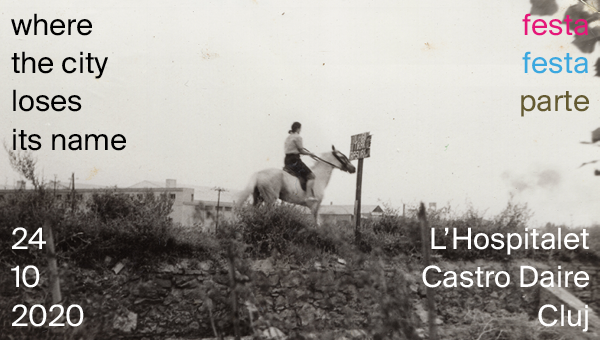


After two years of collaborative work with the groups
Binaural Nodar
(Castro Daire, Portugal) and
AltArt
(Cluj, Romania),
Where the city loses its name
, a project that has continued the
CICdB
and has related it to the contexts of Castro Daire and Lisbon and Cluj, is coming to an end.
CICdB (Centre d’Interpretació de la Ciutat des de la Barraca) is an initiative promoted by LaFundició since 2015 with the aim of restoring the memory of the shanty towns of L’Hospitalet, investigating the city from the point of view of urban informality and configuring itself as an instituting practice that enables the organization of the former residents of the shanty towns to remember and produce stories about their own history.
Where the city loses its name was one of the two projects in the Spanish state financed by the European Commission through its
Creative Europe
program and within the framework of the
European Year of Cultural Heritage 2018
. On the one hand, Where the city loses its name highlighted an uncomfortable memory within the narratives of progress and social justice on which the notion of Europe has been built, and at the same time valued the cultural practices and the historical role of the shanty dwellers as part of the European heritage as well.
Internally, Where the city loses its name has served primarily for the methodological exchange between the three partner organizations: How to restore the memory of informal settlements? What means to use? For what purpose? How can the memory of the shacks be incorporated into the public sphere in general and European heritage in particular? Sharing these questions has helped us to reflect and develop our practice in a more complex way and to better situate it.
For LaFundició, the work of Binaural Nodar, straddling Lisbon and Castro Daire, the town from which a large part of the inhabitants of the disappeared Chinatown of Lisbon came, and to which they return recurrently, has led us to delve into the connections between migration, the countryside and the city, and to understand the shanty towns as territories, in certain aspects landscape, economic, social, cultural… as rururban territories. In short, Lisbon and Barcelona, and their respective metropolitan areas, share a very similar history.
Pata-Rât, on the other hand, confronts us with the shacks in the present. After being expelled from Cluj and moved to its outskirts, the inhabitants (almost all of them gypsies) of the current informal settlement were forced to live in the unhealthy (and illegal) Pata-Rât landfill and to build their houses with the city’s waste. Pata-Rât is a clear and execrable example of racial and social segregation in the urban space. How does its disappearance, its perpetuation or its transformation condition what is and will be said of Pata-Rât? How will the way its past is remembered affect its future? To what extent should this matter to the inhabitants of Pata-Rât, bearing in mind that their daily struggle is for survival?
Next Saturday, October 24 we will meet to put a semicolon to this project. We say a semicolon because the CICdB will continue, as will our partners in Portugal and Romania with whom, for sure, we will continue to debate and collaborate. It will be at noon in
Les Cabasses
, a new space of LaFundició located in the
Parc Agrari
, in the middle of the orchard in the Delta del Llobregat, a landscape still very similar today to the one on which the shanty towns of L’Hospitalet were built.
There will be food, we will present two new issues of the CICdB newsletters as well as a preview of the publication
Where the city loses its name
(result of these two years of collaboration), we will connect with our partners in Castro Daire and Cluj and we will celebrate that we are together. The capacity will be very limited, if you are interested in attending please contact us at:
hola@lafundicio.net